
Diagnostic Equipment
Thanks to modern medical technology and scientific advances, both vision correction and eye disease treatments continually improve. Our computerized systems and equipment include digital photography, virtual visual field testing, automated refraction, and much more. PLUS – no puff of air for glaucoma testing!
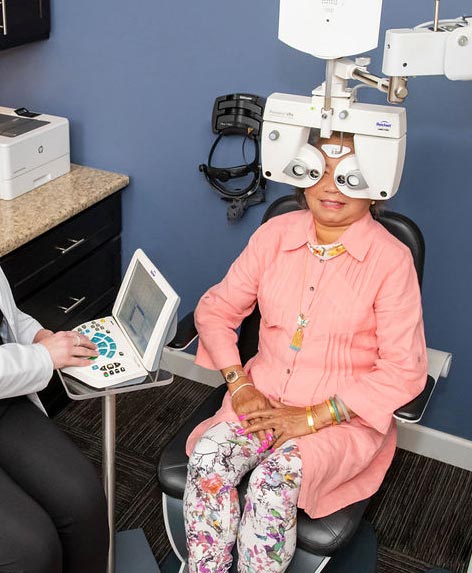
Digital Phoropter
A digital phoropter is a modernized version of the conventional phoropter which we use to measure for refractive error and determine the prescription. Rather than flipping through a series of dials and lenses, the digital phoropter utilizes a computerized system. It incorporates advanced technology with automated testing procedures, helping us to determine your prescription faster and more accurately, improving the quality of vision correction.
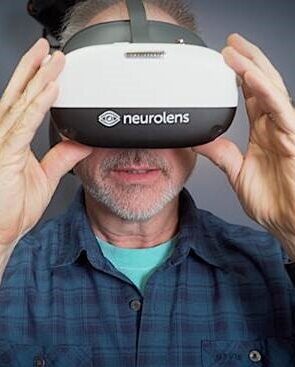
Neurolens
People today are spending more time than ever using screens and digital devices. Our eyes are feeling the strain, not to mention the accompanying headaches, neck pain, and muscle stiffness. While not everyone gets headaches or migraines, some people suffer from visual misalignment which causes these symptoms. Neurolenses are the only prescription lenses that add a contoured prism to bring the eyes into alignment; studies show contoured prisms—Neurolenses—relieve the headaches, eye strain, and neck/shoulder pain.
The Neurolens measurement test at Overland Optical Family Eye Care is completed quickly during your regular exam. This test will allow us to determine whether you have a misalignment in your vision. If so, we’ll find the contoured prism prescription that is right for you.
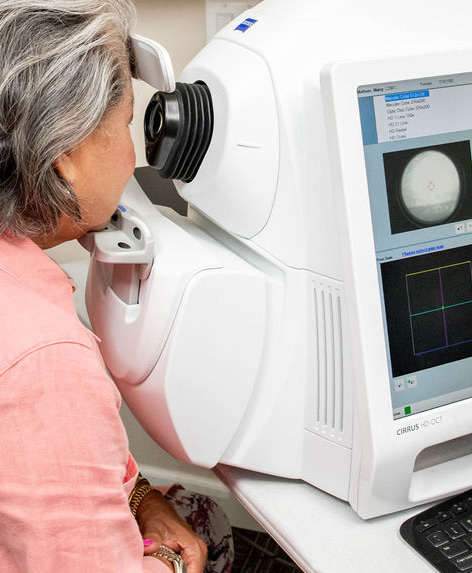
Optical Coherence Tomography (OCT)
The OCT is a non-invasive imaging technology that utilizes light waves (rather than sound waves such as those used in ultrasound imaging); the OCT allows us to create detailed images of your retina. It enables us to look at both the thickness of your optic nerves and the layers of your retina. We use this technology to reveal abnormalities and to diagnose conditions such as macular degeneration, glaucoma, and diabetic retinopathy. It also helps us keep track of the progression of diseases. Your retinal images, stored electronically, give our doctor a permanent record of the state of your retina. The OCT has revolutionized ophthalmic diagnostics and allows us to detect changes over time.
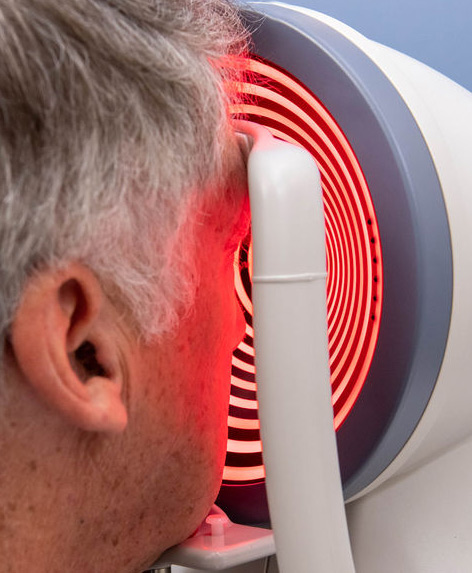
Corneal Topographer
Corneal topography is a technology that creates a three-dimensional map of the cornea, which is the clear dome-shaped surface at the front of your eye. It’s like creating a personalized map that reveals the contours and details of your cornea. Getting a corneal topography scan is non-invasive and painless and has many advantages. It can be used to measure the curvature of the cornea, important for properly fitting contact lenses. A precise fit is essential for optimal comfort and vision correction. Corneal topography can also detect and monitor signs of eye diseases, such as keratoconus, which causes the cornea to become thin and cone-shaped, dry eye syndrome, and more. As is the case with all disease, early detection is key to successful treatment.
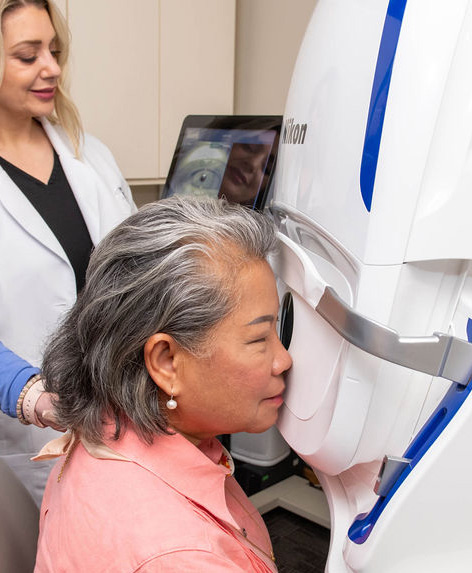
Optomap® Retinal Exam
The Optomap® is a revolutionary diagnostic tool that allows our doctors to view the retina (the back of the eye) in a non-invasive way that is as quick and simple as taking a photograph. This technology generates a high-resolution, digital, color image that becomes a part of your permanent medical record, allowing the doctor to track changes in your eye over time by comparing each year’s images. An Optomap® image detects 30% more than traditional dilation and can in some cases replace dilation. In addition, you take a more active role in your eye care by reviewing the images with your eye doctor and learning about how to “Protect your Vision.”
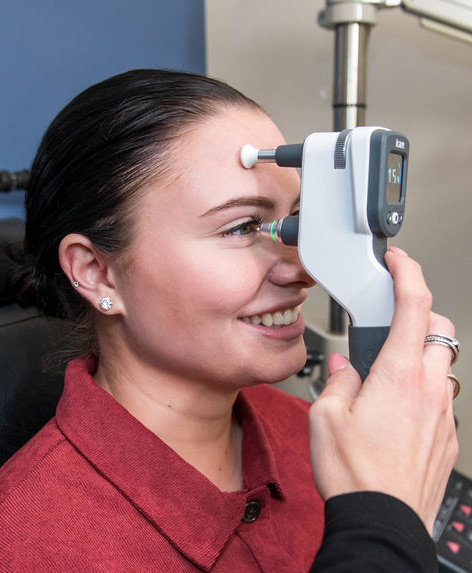
iCare Tonometer
The iCare tonometer is a very gentle and non-invasive device used to measure the pressure inside your eyes. This method replaces the old method of measuring eye pressure for glaucoma testing (the dreaded puff of air) which some found to be very uncomfortable, especially those who are sensitive around their eyes. The measurements taken by the iCare tonometer are precise and quick, providing valuable information to our doctors about your eye health. It is a helpful instrument in diagnosing and managing eye conditions, helping to ensure we provide the best possible care for your eyesight.

Virtual Visual Field Testing
Virtual visual field testing is a comfortable, non-invasive test that allows our doctors to identify any areas of abnormalities, vision loss, or blind spots in the visual field. We use computer technology and a virtual reality headset for efficient, precise assessment and comparison of results. Some applications of this testing include monitoring glaucoma and optic nerve damage, among others. By regularly performing visual field tests, our doctors can track changes in your visual field over time and provide the best possible care for you with informed decisions regarding treatment and management options.
